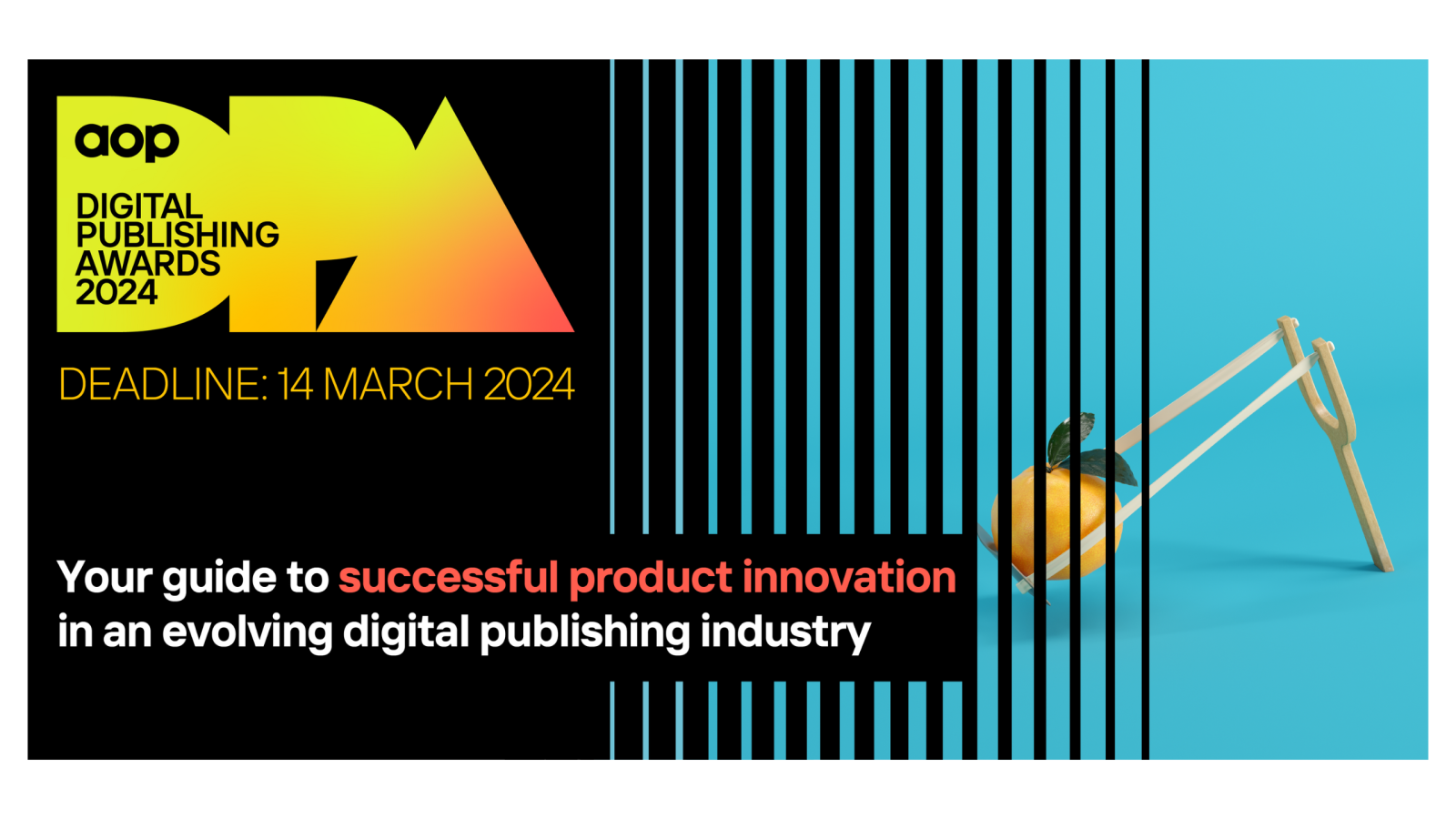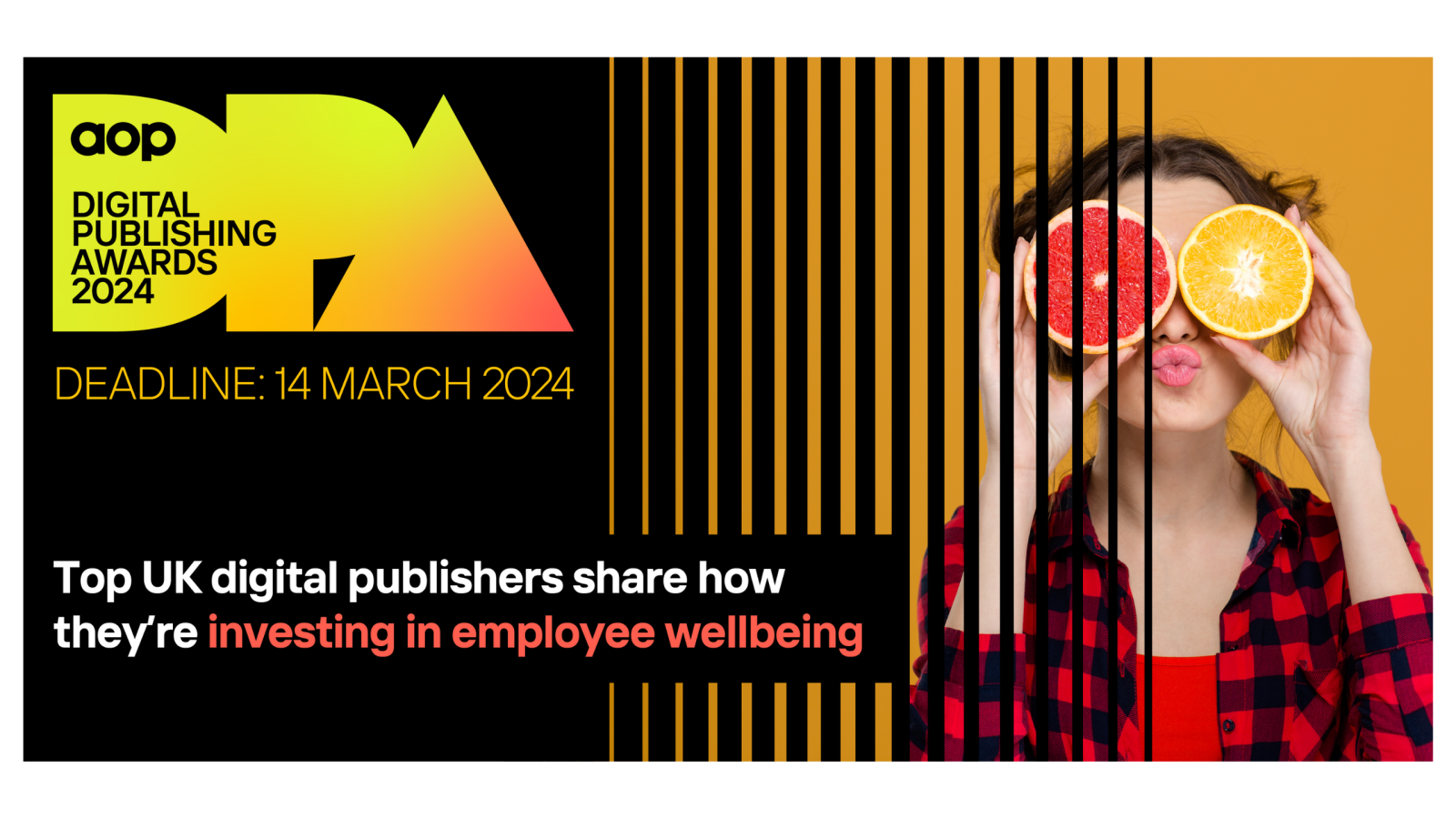
Your guide to successful product innovation in an evolving digital publishing industry
Published: 05 Mar 2024
At a time when publishers are competing for their audiences’ attention whilst simultaneously responding to the changing technological landscape, product innovation is key to staying ahead of the crowd. Indeed, in AOP’s annual survey, digital publishers selected ‘developing new revenue streams through product innovation’ as their top strategic priority for the year ahead.
But what does it take to drive successful product innovation?
We asked members of the AOP Digital Publishing Award jury to share their essential steps to identifying new opportunities and developing innovative products that will deliver for both the end-user and your digital publishing organisation.
There has to be a clear purpose behind your proposed product development. You need to know what value it will add, whether that’s for your audience or for your advertisers. As Morgan Stevenson, Digital Transformation Director at Newsquest, told us: “It should address a pain point, improve efficiency, increase revenue, or offer some other tangible benefit that outweighs the cost and effort of adoption. Getting to the core of this value is a key starting point.”
It’s not enough to have a new, shiny product if it doesn’t have a clear use case. Fortunately, digital publishers have access to a wealth of customer insights to help predict how audience members will want to engage with their content, and a team of experts who can provide additional insights to support product innovation. “[Our] journalists are incredibly knowledgeable and passionate about the markets they serve, with a deep understanding of the issues users are facing in their day-to-day work,” shared Thomas Lake, Director of Product & Technology at InfoPro Digital. “This has helped the product team shape solutions and really understand the user problem.”
Cath Waller, MD Advertising at Immediate Media, also affirmed the importance of truly knowing your audience when it comes to editorial product innovation, referencing new content areas such as Gaming on Radio Times, which has seen triple digit growth over the last year – a success that required understanding and constant testing of their audiences’ appetite for new content. Another of our judges, Sarah Watson, Chief Product Officer at PinkNews, explained how they consider accessibility to be one of their north stars, stating that this “helps to guide us when it comes to making design decisions.”
“Gut feeling, ‘instinct,’ experience, and commercial imperative are all often highly involved – and sometimes, right so, but there can be no substitute for genuine user insight in any kind of product development,” stated Alastair Lewis, Owner of Quested Consulting. “A profound understanding of your users is the key that separates success from mediocrity.”
Once you’ve identified the pain point you’re addressing, you need to get a minimum viable product online fast. “Whether you’re working on a new app, website tool, or podcast format, the same principle applies – stop talking and start building, no matter how rough and ready the resulting prototype is,” recommended Anthony Pratt, Digital Product Director at William Reed Publishing.
With a first prototype at your fingertips, you have a tangible demonstration of your concept that you can share with your colleagues, your audience, and your clients – although, as Anthony went on to explain to us, it’s vital that you reach out to a wide array of people for feedback to avoid unintentionally creating an echo chamber.
InfoPro Digital’s Thomas Lake concurred, stating that “once built, the journalists were able to get our products and prototypes in front of core subscribers and hard-to-reach senior audience members thanks to their extensive network and strong relationships. This helped get the right feedback from the right people, giving us great confidence in going to market with our new products.”
Developing a simplified version of the product allows you to test for usability and get superior feedback from prospective customers that will be crucial in developing your final product.
As stated, the biggest benefit of having a product out in market is being able to get targeted, relevant feedback. To achieve this, you need to have a range of mechanisms in place to understand how you should shape future development of your product, including metrics regarding usage and uptake, user surveys, and anecdotal feedback from your teams on consistent pinch points.
“We are obsessed with data,” shared PinkNews’ Sarah Watson. “We can see what’s working and what’s not, and we use that to lean in to the areas we can see are trending in the right direction.
Creating this feedback loop is also crucial to future-proofing your product. “Innovative products often arise from an astute awareness of emerging trends and the foresight to predict how users’ needs might evolve,” said Newsquest’s Morgan Stevenson. “To that end, most successful publishers engage in a continuous feedback loop, staying attuned to user feedback, market dynamics, and technological advances to refine and adapt their products over time.”
This feedback and insight – which includes external market awareness – allows you to continuously evolve your product to meet new needs as they emerge.
At the heart of any new innovation is an element of risk. “Foster a culture that celebrates calculated risk-taking,” explained Paul Hood, Digital Development Director at The Sun, News UK. “Innovation thrives in an environment where failure is seen not as a setback, but as a stepping stone towards success.”
It is the nature of innovation that aspects of your product development will fail - but that is a vital learning opportunity in and of itself. In failing, you have a chance to truly refine and polish your product offering.
Immediate Media’s Cath Waller shared a similar perspective about the importance of failing fast and understanding what went wrong, before explaining that “utilising Gen AI in the workflow also helps to drive innovation and learnings at pace.”
New technologies have the potential to rapidly streamline your test-and-learn process to support new product development, but you first need a workplace culture that is supportive of innovative, outside-the-box thinking to take advantage of these technologies. Ultimately, as Paul Hood told us, “the crux lies in an agile approach – be ready to pivot, experiment, and iterate based on real-time feedback.”
Innovation takes collaboration: you need that mix of skillsets and mindsets to create innovative solutions that address your customers’ pain points. The demise of third-party cookies is a particularly good case study on how we can come together as an industry to solve a shared challenge. “By working to create meaningful partnerships with all parties in our supply chains, we can successfully create a sustainable movement away from industry’s obsession with third-party data and intermediaries adding little value,” shared Nat Francis, Digital Revenue Operations Director at Bauer Media, as he outlined how a collaborative approach provides the precision needed to ensure the success of a new product.
Another of our judges also gave an example of how internal collaboration is supporting publishers during the deprecation of third-party cookies. Mantis, developed by Reach plc, was originally developed as a tool to help publishers manage brand safety, although it has expanded considerably since then through the use of advanced AI technology and close collaboration between different teams in the organisation. “This journey highlights the importance of targeted innovation and internal collaboration in achieving meaningful technological advancements,” explained Leslie Harris, Head of Digital Partnerships at Reach plc. “It also illustrates the potential of internal solutions to outperform and replace external third-party tools.”
With a clearly defined focus on your audience’s needs, a collaborative culture that encourages people to take calculated risks, and established feedback loops, you can lay a path for successful product innovation in your organisation. As News UK’s Paul Hood shared with us, “collaboration is an unsung hero of innovation. Forge partnerships that bring fresh perspectives and diverse skill sets. Disrupt the status quo not for the sake of change, but to meet unmet needs and surpass expectations. Oftentimes, true magic happens at the intersection of creativity and utility.”
Step 6? Enter the AOP Digital Publishing Awards to demonstrate your effort and ingenuity to the wider digital publishing industry. From the Product Development Team of the Year category to the category for Best Digital Publishing Innovation [sponsored by Index Exchange], there are a number of categories where your work will shine. Enter before March 14th for your chance to impress our panel of judges.
Related content

Top UK digital publishers share how they’re investing in employee wellbeing
69% of respondents to AOP’s annual survey said that supporting and retaining their current employees was their top talent priority for 2024. But what are leading digital publishers actually doing to proactively promote employee wellbeing in their own organisations? Discover practical tips from Time Out Media, Telegraph Media Group, Mail Metro Media, and more to create a positive working environment where your team can thrive, innovate, and succeed.
Published: 20 Feb 2024
Read